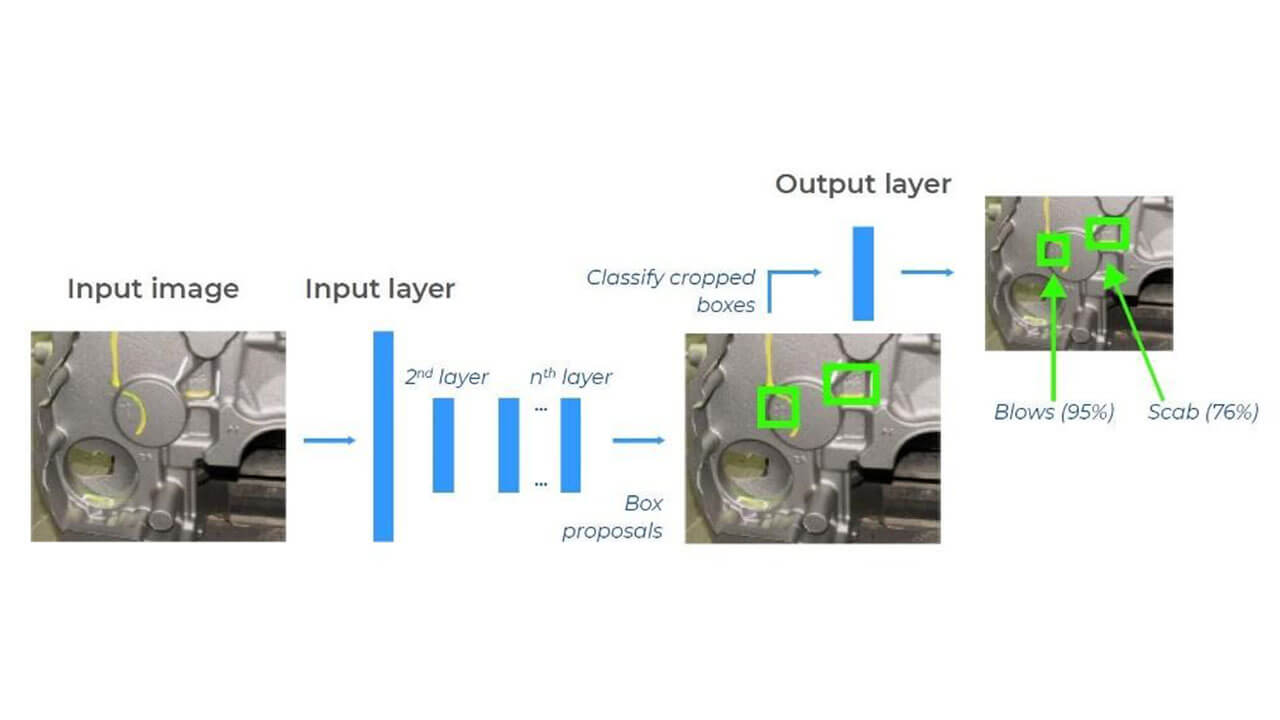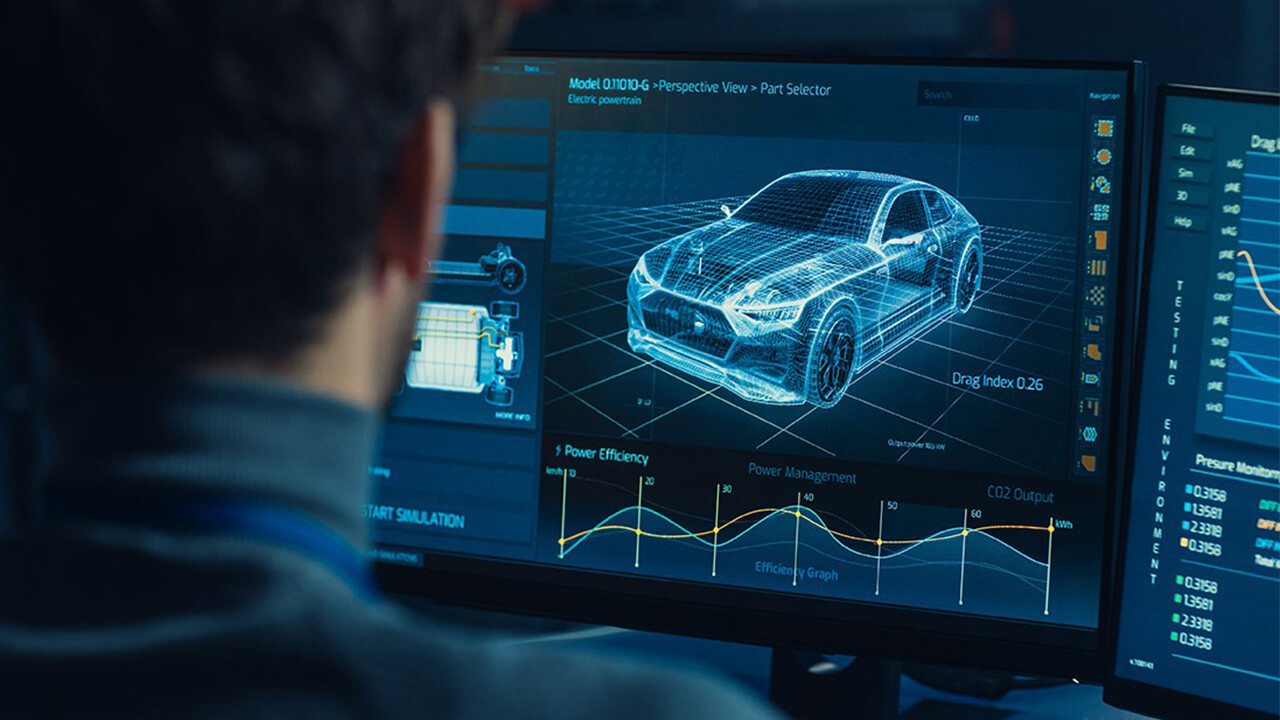Contact Info
133 East Esplanade Ave, North Vancouver, Canada
Expansive data I/O tools
Extensive data management tools
Dataset analysis tools
Extensive data management tools
Data generation tools to increase yields
Top of the line hardware available 24/7
AIEX Deep Learning platform provides you with all the tools necessary for a complete Deep Learning workflow. Everything from data management tools to model traininng and finally deploying the trained models. You can easily transform your visual inspections using the trained models and save on tima and money, increase accuracy and speed.
High-end hardware for real-time 24/7 inferences
transformation in automotive industry
Discover how AI is helping shape the future
Cutting edge, 24/7 on premise inspections
See how AI helps us build safer workspaces

Manufacturing industries face certain risks when they decide to implement state-of-the-art yet unproven technologies, such as Artificial Intelligence (AI), into their workflow. An infrastructure company with an experienced and creative team can support auto manufacturers of every size in automating their value chain using an innovative and advanced combination of hardware and software.



Manufacturing industries face certain risks when they start implementing state-of-the-art but unproven technologies, such as Artificial Intelligence (AI), into their workflow. This is often due to the lack of expertise in integrating these systems and/or limited resources. Therefore, a critical step in surviving the changing industry scene, the automotive industry in particular, is to seek and establish partnerships and associations with the goal of transitioning from a “traditional carmaker” to a “4th industrial revolution auto manufacturer”. An infrastructure company with an experienced and creative team can support auto manufacturers of every size in automating their value chain using an innovative and advanced combination of hardware and software. This will enable your company to make integrated ecosystems with shared access to real-time data, which will facilitate coordinating with suppliers and partners, improve production quality, and reduce production costs.
We begin by collecting data using cameras positioned in calculated locations to record multiple angles. Images are first preprocessed and prepared by our AI-powered system and then analyzed by a CNN algorithm to determine the location, edges, and type of any defects. After we trained the model, we can use it to detect defects in new products. The new defects’ locations along with other metadata such as item number and type are still recorded for further analysis. Finally, the system combines consistent quality control with traceability by performing OCR on the surface of castings to improve product quality and reduce production costs.
Production quality and yield are two of the industry’s top performance metrics. And AI-powered systems can be leveraged to improve both. AI systems can also take care of coordinating the supply chain, inspecting machines, handling raw material, performing tests, and packing the final product. In essence, AI-powered systems provide automakers with the agility, efficiency, and level of automation required to meet new demands. Let’s see what AI has to offer in each part of the process, which includes:

In order to become a smart factory, companies must produce cars in a standardized, fast, reliable, and cost-efficient manner. Robotic Process Automation (RPA) employs modern technologies such as automation, modeling, and digitization to make the transition to a smart factory possible. Robots in the car manufacturing industry can take on various responsibilities such as handling material, assembly inspection, moving items, packaging & palletizing, and finalizing the product. They can be equipped with AI-powered computer vision systems to provide fast feedback on system performance in real time. AI can accelerate the production rate and minimize unnecessary production costs by reducing downtime with a reasonable cost. AI-controlled robots, relying on sensors and algorithms to track all equipment, can imitate the intellectual functions of the human mind in detecting defects, increasing equipment efficiency, and lowering maintenance costs in the manufacturing process. AI can also predict if a breakdown is about to happen and prepare a list of necessary preventive maintenance tasks to avoid downtime. AI helps assembly lines to maximize efficiency and automate factory tasks that are tedious, dirty, or even dangerous for human workers.
The main duties of an AI-powered robot in the automotive manufacturing industry are:
1. Coordinate between handling and welding robots to guarantee proper function.
2. Paint bodies intelligently to reduce waste and save time.
3. Precise welding using automatic early defect detection and removal techniques.
4. Faster assembly by reducing reliance on human action.
5. Increase consistency and repeatability by enhancing trimming and cutting processes
6. Pouring molten metal, transferring metal stamps, and loading and unloading CNC machines are some other tasks best left to AI-powered robots because of their inherent risk.
One of the major issues with conventional quality control in production is substantial operational costs, mostly due to reworked parts, wasted material, reduced yield, increased work in process inventory, post-sale recalls, warranty claims, and repairs. AI has now proved to be the best and most trustworthy technology to successfully inspect the components of a vehicle. And since it’s constantly learning, its performance gets continuously enhanced as its use in industry soars.
Conventional visual inspection is performed through a manual process which is time-consuming, prone to errors, subject to operator perception and experience (impact consistency), blocked by the programming step(not flexible and cannot adapt to product changes), and can only detect a handful of defects at a time. Employing AI in QC reduces cognitive load for operators, minimizes false positives, doesn’t require programming, adapts to product changes, and can detect hundreds of areas of interest on a product in seconds.
AI-powered visual inspection helps automakers inspect foundry engine blocks (for cracks, deformations, anomalies), body shop welding seams, paint shop surfaces, press jobs (for scratches, dents, cracks, staining), and more. There are countless opportunities to leverage the power of AI-assisted systems, even in decision-making roles. Some of the use cases for AI in QC are:


Auto manufacturers often face complex supply chain issues in case of breakdowns which lead to huge costs and waste of time. Even in the auto manufacturing industry, where solutions have been refined and optimized for decades, there is still room for improvement. Our State-of-the-art high-performance AI-powered systems can tackle such problems and effectively regulate the whole supply chain by detecting technical bugs, resolving inventory management malfunctions, solving logistics errors, and more.
Recently, the auto chip supply crisis has been made more complicated due to the specificity of auto chips for each automaker and each auto model, and the lack of the overall chips production volume. Hence, automotive companies should consider employing AI-based systems to help supply chain managers better predict and prepare for factors affecting chip supplies.

The main goal of R&D units is designing state-of-the-art car parts with enhanced performance. AI-powered systems can help designers and engineers reduce design time, better simulate and evaluate car parts’ performance and improve the efficiency of products. Designing a new car part may take several weeks for experienced engineers, whereas AI algorithms can accomplish the same task in several minutes. The process of generating 3D CAD models used by CNC machining systems to produce custom parts can also be facilitated using our AI-powered system. Last, but absolutely not least is extensive applications of AI in the field of reverse engineering.
© 2022 Aiex.ai All Rights Reserved.